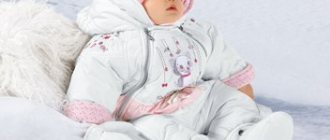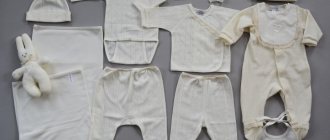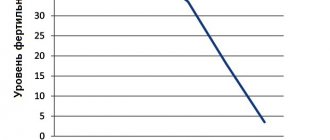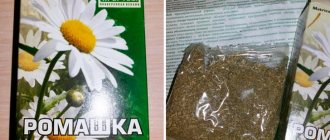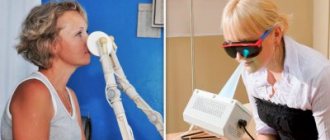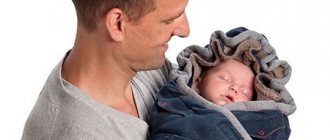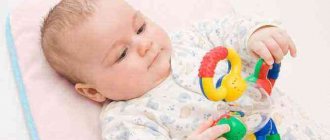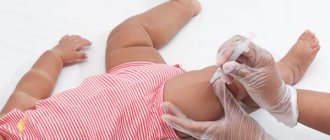Walking with your baby brings an incredible amount of joy: a warm breeze, colorful nature and fresh air captivate and relax the baby, allowing the mother to get some rest. Oh yes, this is when the child was born in the summer or spring: in order to take the baby outside in the cold season, you will have to figure out how and how much to walk with the newborn in the winter, so that such a promenade in no way harms the fragile body.
First walks for a winter newborn
You recently returned from the maternity hospital with your baby. It's a clear winter day outside. The sun is shining, the sky is blue, light frost. I just want to run outside and cheer up. But what about the baby? Will walking at minus 5 or 10 degrees hurt him? What if the thermometer readings are even lower? Or the wind? The young mother has a lot of questions in her head. The search for an answer is complicated by the abundance of radically opposing expert opinions on this matter. When and at what temperature to walk with a newborn?
It is best not to take the baby outside until the local pediatrician visits him. The doctor usually comes the next day after discharge from the hospital. Sometimes - after 1-2 days. If the doctor has no complaints about the baby’s health, you can “breathe some air.” Of course, provided that the weather is suitable: frost not lower than minus 15 degrees, without wind or snowstorm. In the first few days, it is better to take the baby outside for about 10 minutes. You don’t even need to roll out the stroller - wrap the baby in a blanket or envelope and stand with him in the yard for a while. If you don’t want to get dressed for such a short walk, and the apartment has an open balcony, you can safely walk on it.
Gradually, the walking time can be increased, adding 5 minutes every day or two. By the month you will be able to fully walk with your baby: the walk will take about an hour and a half. Of course, every time before you go for a walk, you need to look at the street thermometer. We walk only in good weather: sunny, without wind or snowfall. If the weather is not ideal, we shorten the walking time, or skip a day or several days. Walks are canceled if the child is sick.
Rules for an ideal walk with a child
A walk with a newborn consists of several components, because it is important not only when to go outside, how long to walk with the baby, but also how to dress him and what to take with him. It all depends on the time of year and weather conditions.
What to do in the summer?
Summer weather can be dangerous for a newborn baby, as heat can lead to overheating, and unexpected precipitation can lead to colds.
To ensure that your first walk with your child brings only benefits, you need to follow these recommendations:
- In hot weather, it is better for the child to dress in a light vest, rompers, and thin overalls. Since the heat is insidious, you need to wear a hat, even if the newborn is not exposed to the sun's rays.
- You should also worry about the quality of clothing - cotton items “breathe” well in the heat, are hypoallergenic and are able to regulate thermoregulation.
- For the first walks with a newborn in the heat, and even in a sling, even lighter clothes are suitable. At this time of year, the baby may be comfortable only in Parmers, but it is better to wear a bodysuit. You must also choose the right color and material of the sling - warm and dark fabrics will only harm the baby.
- To understand whether the child is dressed according to the rules, touch the neck. If the skin on the neck is too hot, it means that the child’s body reacts to the heat this way (overheating is possible); in the case of cold skin, we can say that the baby is freezing.
For summer walks with your child, you will need several diapers, spare diapers, a light jacket with long sleeves, and a flannelette blanket.
It is worth understanding that the heat can give way to rain and thunderstorms at any moment, so you should worry about possible force majeure in advance. Children's bodies do not tolerate heat well, so the optimal temperature for summer is considered to be 23-25 degrees Celsius. If the weather outside is too hot - above 30 degrees - you should stop walking for a while.
What to do in the off-season?
For parents of newborns born in the off-season, it is more difficult to choose things for walks, since weather conditions often change. This is why you must account for any contingencies.
For ideal walks during these times of year, you will find the following tips useful:
- The heat can come in May or September, so you need to focus not on the calendar, but on the weather. On warm days, the child can be dressed in a vest with long sleeves, a not too thick blouse, autumn overalls and a thin headdress.
- When the temperature drops to +10, newborns will need an additional warm hat and insulated overalls. If the temperature drops even lower, the overalls are changed to a winter version.
- Walking in a sling provides the baby with an additional “warmer” - the warmth of the mother’s body. In spring or autumn heat, you should limit yourself to summer overalls; cold weather suggests an autumn version of this clothing.
- Don't forget to take a loose blanket with you, in this case you can wrap your child up to protect him from the rising wind and protect him from drafts.
The best choice for this time of year is a transformable jumpsuit, which has a soft, insulated lining that can be detached. If the heat goes away, you will remove the insulation, which will also allow you to walk with your newborn when it gets colder.
What to do in winter?
Walking with a newborn in winter is extremely beneficial for the baby, but is often burdensome for the parent.
To make you and your child feel comfortable, cozy and as safe as possible in this weather, you need to do the following:
- Dress your baby in layers: a vest with rompers (can be replaced with a slip), fleece overalls, a winter envelope, which can be replaced with overalls with a particularly warm lining.
- A child also needs several hats: a thin seamless hat and a warm winter hat.
- In this weather, the stroller must have a warm blanket. It will protect the child from blizzards, frost, and strong winds.
- If you choose to wear a headband for walks, make sure that the overalls do not ride up, otherwise the child will blow out. If the set is not one-piece, then the jacket and pants should have straps.
- Just like in the summer heat, in winter it is also important to monitor the well-being of the little man. Constantly touch his neck to check if he is sweating or cold. In case of perspiration or cold skin, return home immediately.
A universal tip for walking with a newborn baby is to take walks in parks. The ideal option is a pine forest, where the air is very clean and even healthy.
There is no need to walk near highways and busy streets because of car exhaust. Avoid hanging out in crowded places, otherwise your baby simply won’t fall asleep.
Walks are very important for a baby, so you shouldn’t give them up unless the child gets sick or the weather turns bad. Also, take care of yourself.
Eliminate high heels and long outerwear for a while, and include sportswear, gloves and a hat in your wardrobe. In this case, the morning and evening “promenade” will bring pleasure to both of you.
How long to walk with a baby aged one month or older?
So, by the month the duration of walks at temperatures down to -15° without wind can be about 1.5 hours. You can walk longer with an older toddler: up to 2 hours. Some children happily sleep outside for 2-3 hours in winter.
Very young children sleep throughout the walk, older children can sleep through part of the walk, and spend the rest of the time admiring the beauty of their home yard or the nearest park. In any case, the main thing is that the baby is dressed for the weather. The same applies to an adult who walks with a baby.
How many times a day can a child be taken outside?
The frequency and duration of stay in the fresh air depends on the time of year, weather conditions and the child’s health condition. In summer, you need to walk with your child twice a day for two hours. If the family lives in a private house, then the stroller with the baby can be placed in the shade for almost the whole day. In winter, you also need to walk twice a day, but the duration of the walk should be no more than an hour.
Frequent exposure to fresh air promotes a child’s good appetite and sleep, as well as strengthens his immune system and develops heat exchange functions.
How to check if your baby is cold?
Many mothers feel their baby's nose every five minutes. This way they check whether the child is cold. This is not an informative method. In principle, the nose cannot be warm outside in winter, because the baby breathes cold air. Both your nose and cheeks will be cold. It’s better to touch the hands: if they’re warm, it means everything is okay, the baby is warm. Cool - it's worth covering with an extra blanket or, perhaps, it's time to call it a day and go home. In general, the baby will let you know if he feels discomfort: he will start crying and will not calm down until you take him to a warm place.
At what temperature can you walk?
Is it now more or less clear whether a sick child can walk with a fever? And at this stage it’s time to approach the next question: when are walks safe, provided the weather is suitable and the baby does not have an infection?
If a child’s temperature is below 37 °C, he is alert, eats well - there is no reason to stay at home, even if minor catarrhal manifestations (runny nose, cough) still persist. A walk of half an hour to an hour will only do you good.
At a temperature of 37–37.3 °C, during a mild course of the disease or at its beginning, it is also not prohibited to go outside. However, it is better to stay at home to avoid deterioration of the child’s condition if he has:
- poor appetite;
- pain;
- lethargy;
- capriciousness.
Also, you should not go out if the street temperature in summer is 25 °C or higher or in winter - below -10 °C. But here it should be taken into account that a temperature of 37 °C in newborns is not considered elevated and is accepted as the norm.
At 37.5–37.9 °C, when the body is actively fighting disease pathogens, the temperature cannot be lowered, as this will stop the natural protective process. If the child is over 3 years old, you can take a walk, but not for long, just 15 minutes will be enough. If the baby's temperature has risen to these levels as a reaction to the teeth, you can also take a walk. However, such thermometer readings are considered borderline, and walking when sick can have a negative effect.
At a temperature of 38 °C, the child himself will not want and will not be able to walk. In such heat, the condition is characterized as unsatisfactory, and walks are undesirable even in ideal weather. Treatment in such cases is carried out at home, and the supply of fresh air can be ensured by ventilating the room.
In children with a temperature above 38 °C, heat exchange is impaired, so in this case they cannot go for a walk, and treatment should be carried out exclusively at home.
How to dress your baby according to the weather in winter?
A good rule of thumb is “plus one layer.” That is, for example, I put on a T-shirt, a turtleneck, a wool sweater and a down jacket. For a child - a vest, a thin knitted blouse, a sweater, overalls, and a blanket on top. Or, under the overalls (envelope), an additional insulated fleece slip is worn.
Why is this so? The fact is that an adult or an older child can run around in the street, stamping their feet and clapping their hands. The baby does not have such opportunities; he lies almost motionless all the time. Therefore, it is important to create an additional layer of warmth for it.
Place
To make the walk as pleasant as possible, it is best to take place in an area without much traffic, where the air is very dirty and noisy. For example, parks are suitable places. Fresh air is good for everyone, especially little ones.
Because the baby's immune system is still immature, the baby relies heavily on the mother's antibodies found in breast milk. Therefore, you should avoid closed spaces and meet with many people who may be carriers of various viral diseases. Avoid crowded places such as public transport, markets, shopping malls and more. They are also not a great place for a small child.
Gradually, the duration of your walks will increase, and you must be prepared for emergencies. Take a couple of clean, dry clothes, a few diapers, wet wipes, a bottle of water, and possibly prepared milk (if it's baby food).
Walking outdoors also helps in relieving baby's colic. If this bothers you at home, you have to leave the house, and the child often falls asleep.
Walking is also good for the mother. They help to recover faster after childbirth, improve mood due to increased production of endorphins, and help get rid of accumulated physical and mental stress associated with the early days of a newborn at home.
